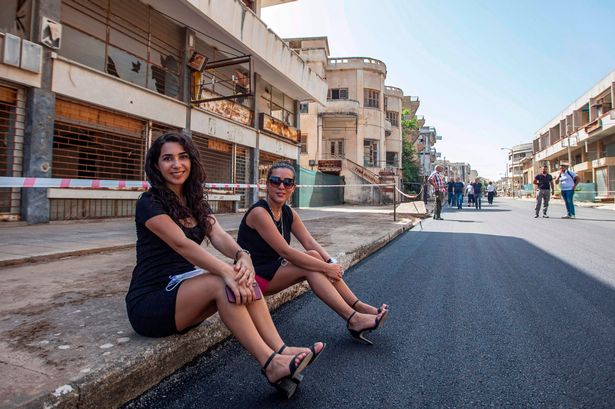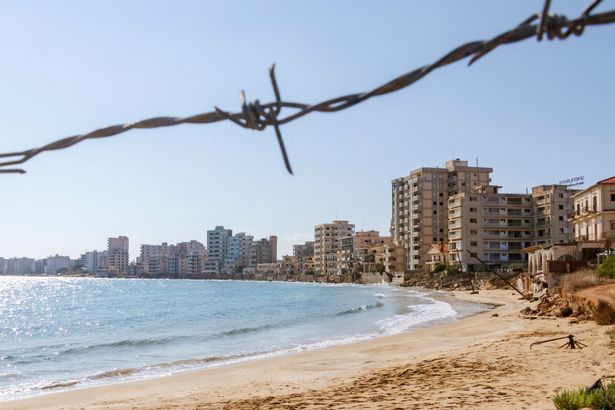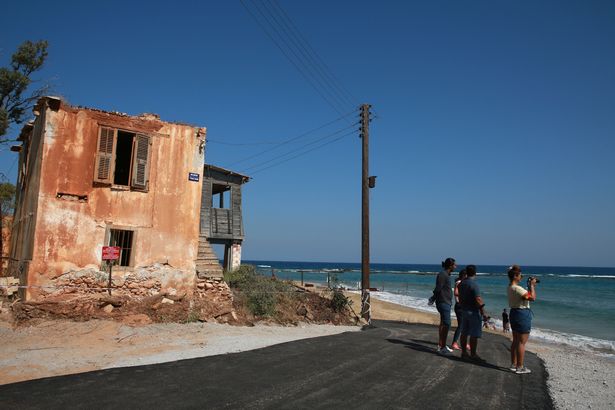In the eastern Mediterranean, a beachside resort that was once a hub for holidaymakers has become a ghost town after years of neglect
Once a hotspot for Hollywood royalty, this seaside resort has become an eerie ghost town. But this Cypriot destination has taken on a second-life for travellers, becoming a hub for ‘dark tourism’.
Not far from popular Cyprus holiday resorts like Paphos and Limassol sits Varosha. Varosha was once a glamorous holiday destination in its own right, frequented by Elizabeth Taylor and other stars of the 1960s.
But when the Turkish army invaded the northern region of Cyprus on July 20, 1974, the seaside resort changed forever. Five days prior, there had been a coup attempt supported by the Greek junta. The 15,000 residents of Varosha were forced to flee in large numbers as a result of the military invasion, abandoning their homes, places of business, and immaculate beaches.
READ MORE: Beautiful EU country named the best to retire in and it’s not Spain
Thus, the area became a ghost town with buildings left largely empty. Even today, the neighbourhood remains untouched under the control of Northern Cyprus. Naturally the area lost all appeal to holidaymakers, as plants began to reclaim the pavements and sea turtles nested on Varosha’s once sunbather-friendly beaches.
However, in October 2020, a decision was made by Turkish President Recep Tayyip Erdogan and the then prime minister of Northern Cyprus, Ersin Tatar, to reopen the area to visitors. But Varosha has begun to attract a different type of tourist than it did during its 1960s heyday.
More than 1.8 million tourists have visited the ghost town in the last four years – according to statistics released in 2024. However, the tourists seem to be drawn to the town’s dark historical significance and dilapidated landscape.
Speaking to the Daily Express, Hubert Faustmann, a professor at the University of Nicosia, said: “The section found itself in the top tourist sites in terms of dark tourism, so they started to open up certain parts of Varosha, and it’s now a tourist destination with guided tours, with e-bikes, vehicles and coffee shops.”
Faustmann continues: “Varosha is being used as a tourist destination, as a tourist attraction, without a single inhabitant prior to 1974 returning. It’s changed in the sense that it’s open to the public, but it’s not open for return.” Varosha has sought to repair its decaying image by clearing trash in preparation for its reopening. Today, the town offers many facilities for all varieties of visitors, including beach umbrellas and canteens.
And a matter of days after its tourism figures were released, Varosha’s struggling circumstances were discussed in Oslo by the Parliamentary Assembly of the Council of Europe (PACE).
The PACE rapporteur for Varosha Piero Fassino, who visited the ghost town in mid-May, presented a report to the group during the meeting. The Italian senator said he hoped Varosha could be rejuvenated into a “living town” again after his visit.
That said, dark tourism has long been a feature of the travel industry, gaining mainstream recognition with the Netflix show, Dark Tourist. The show captures the weird, creepy and superstitious traditions and lore tied to many destinations around the world.
Speaking to The Mirror, the dark tourist enthusiast Louise Joy explained: “”Traditionally, dark tourism is visiting places associated with death and tragedy.” Joy is a blogger and founder of The Morbid Tourist and says she regularly searches for “spooky” haunts when travelling.
Joy says TikTok has also made a huge contribution to the dark tourism industry in recent years. “The individuality on TikTok [helps] people seeing stuff that is different and you don’t necessarily see that out there offline, like in books,” says Joy.


